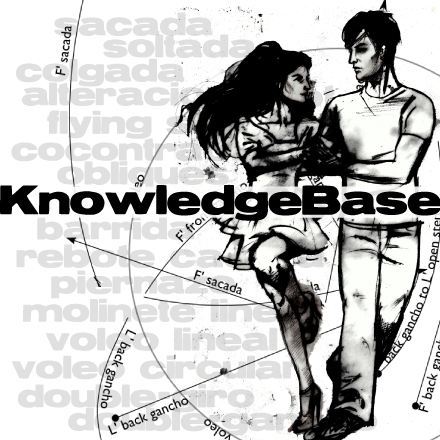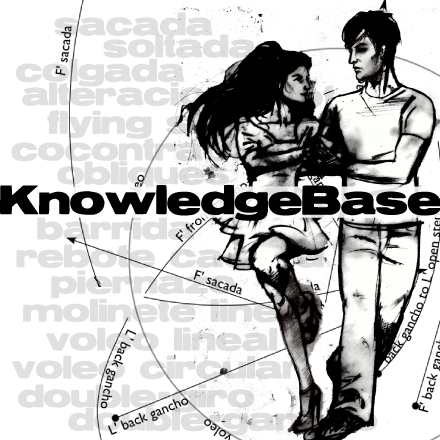Rebote cadera is a rebote (rebound) of the revel’s cadera (hips). It’s a fast and sharp reversing pivot with the revel’s legs touching.
It’s a special effect created by co-contraction, applied in a contra direction to her pivot (front or back), with a change of embrace to block. In contrast to a contra voleo-circular, where the mark’s body moves around the revel, in rebote cadera his body is directed to intercept and block her spiral.
Procedure
- Mark a pivot (front or back).
- Extend the base leg’s knees (when the Mark does this, the Revel will copy)
- Co-contract the base leg
- Co-contract the biceps and triceps.
- In rebote cadera (and patada), the mark for the projection is built in to the movement of the joint (Mark’s pulling obliques and attached arm), then the co-contraction (simultaneous in the blocking arm and leg makes elasticity.
- The revel will cocontract arms, allow hips to continue, and then cocontract legs. (Elastic consequence!)
- Difference between front and back rebote cadera: The co-contraction is not directional. The revel’s body has direction from the projection, the application of co-contraction will create a different sensation in the embrace (pull v. push).
Uses of Rebote Cadera
- Contrast: Create a series of rebote cadera and circular voleos.
- Fast: Milonga
- Creating a very large pivot. Since the Revel’s legs are together, it’s easier to get her to make a very big pivot for Revel’s back sacada or crossed gancho.
- Control: The same technique of blocking a pivot can be used to vary the pattern in molinete lineal or to give elastic energy to fast ochos.











